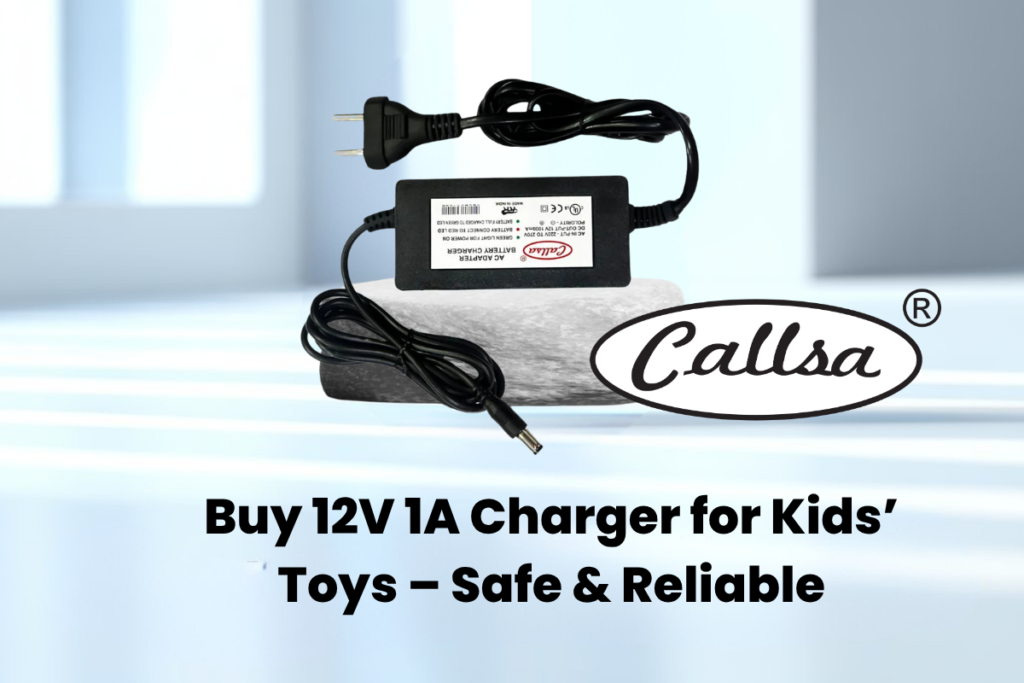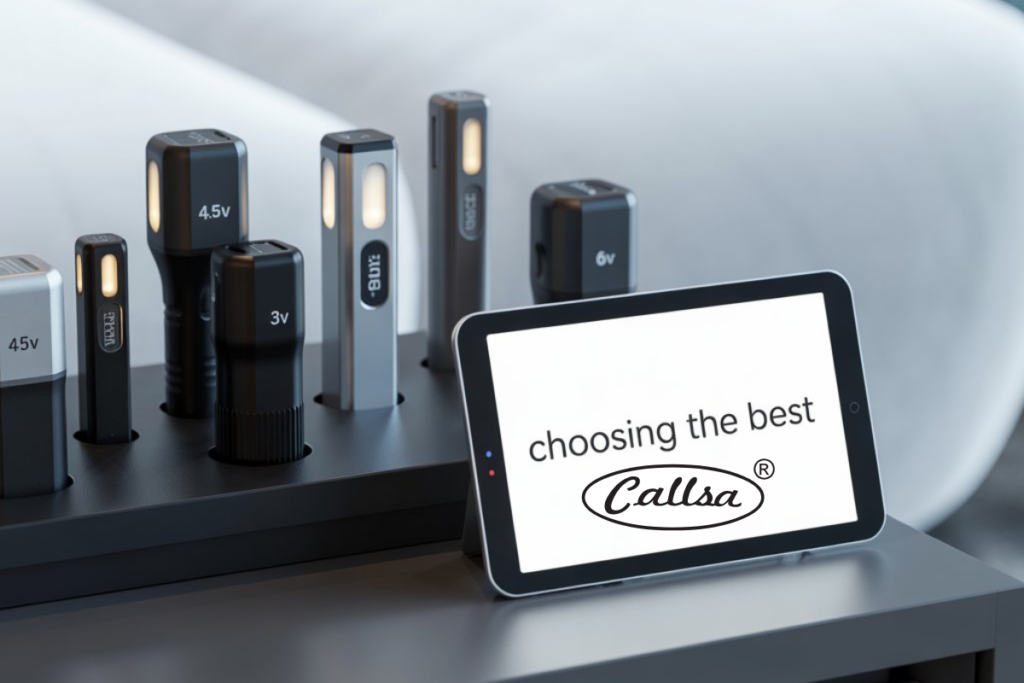Why BIS-Certified Chargers Are Safer for Your Devices
This is where BIS-Certified Chargers play a vital role. Certified by the Bureau of Indian Standards (BIS), these chargers go through stringent quality and safety checks to ensure they protect both devices and users from hazards like overheating, short circuits, or electrical fires. For consumers, BIS certification provides peace of mind and safety assurance. For manufacturers and importers, it builds credibility and ensures compliance with Indian government regulations. Brands like Callsa, which emphasize quality and trust, make it easier for buyers to invest in safe charging solutions without compromise. Read More : Which Type of Mobile Charger Is Right for Your Phone? What Does “BIS-Certified Chargers” Mean? The Bureau of Indian Standards (BIS) is India’s national body that sets benchmarks for product quality, safety, and reliability. To regulate electronic devices and protect consumers, BIS operates under the Compulsory Registration Scheme (CRS), which mandates certification for specific electronic goods before they can be sold in the Indian market. Chargers—whether for mobile phones, laptops, or other electronic devices—are categorized under IS 13252 (Part 1):2010, a safety standard that ensures compliance with international electrical safety norms. This means no manufacturer or importer can legally sell chargers in India without meeting these mandatory BIS requirements. By making BIS-Certified Chargers compulsory, the government aims to curb the influx of substandard products, reduce risks of accidents, and promote consumer confidence. For instance, Callsa ensures its chargers strictly adhere to these BIS norms, giving users both safety and durability in every product. Read More : Best Kids’ Car Chargers of 2025: Safe and Efficient Charging Solutions Why Are BIS-Certified Chargers Needed? The rise in gadget dependency also brings hidden risks. Unsafe or counterfeit chargers have been linked to over 60% of mobile-related fire incidents reported in India in recent years. This makes BIS-Certified Chargers more than just a regulatory checkbox—they are a necessity. 1. Safety Assurance Certified chargers undergo rigorous testing to ensure protection against electrical shocks, overheating, short circuits, and overcharging. This minimizes the risk of accidents at home, in offices, or during travel. 2. Legal Requirement Under Quality Control Orders (QCOs), it is illegal to sell chargers in India without BIS certification. Non-compliance can lead to seizure of goods, heavy penalties, and even legal action, putting both businesses and consumers at risk. 3. Consumer Trust A BIS mark on a charger signals quality, safety, and compliance. Customers are more likely to choose brands that prioritize their safety, and companies like Callsa leverage BIS certification to build stronger trust and long-term loyalty. Read More : High-Speed 14V 2A Battery Charger for All Devices What Happens When Chargers Aren’t BIS-Certified? The risks of selling or using non-certified chargers go beyond technical faults—they can have serious legal and reputational consequences. For example, in 2023, enforcement authorities in Hyderabad raided shops selling fake CRS-marked mobile chargers, seizing thousands of units that did not meet BIS standards. These products not only posed safety hazards but also violated government regulations. The consequences of bypassing BIS norms include: Legal Action: Selling chargers without BIS certification is a punishable offense under the Compulsory Registration Scheme. Offenders face fines, criminal charges, or both. Product Confiscation: Authorities can seize non-compliant stock, resulting in heavy financial losses for manufacturers, suppliers, and retailers. Reputational Damage: Once caught, a brand may struggle to regain consumer trust. In today’s digital-first world, negative news spreads quickly, affecting sales and credibility. That’s why companies like Callsa strictly adhere to BIS certification standards—ensuring not only legal compliance but also safeguarding their brand reputation and customer trust. Read More : Buy 12V 1A Charger for Kids’ Toys – Safe & Reliable The BIS Certification Process for Chargers To ensure chargers meet the required safety benchmarks, the Bureau of Indian Standards mandates certification under IS 13252 (Part 1):2010, which covers the safety of information technology and electronic equipment. The process is systematic and ensures only high-quality products reach consumers. Key steps in the BIS certification process include: 1. Testing in BIS-Recognized Labs Every charger must undergo rigorous testing in a BIS-approved laboratory to confirm compliance with safety standards such as protection against fire, shock, and overcurrent. 2. Submission of Documentation Manufacturers must provide complete details, including product labels, technical specifications, voltage ratings, and the mandatory “Made in” mark for transparency. 3. Application by Manufacturers or Authorized Representatives Only the manufacturer or an authorized Indian representative can apply for certification. Traders and distributors are not eligible to apply directly. 4. Timeline for Certification On average, the BIS certification process takes 15–30 working days, depending on the accuracy of documentation and the speed of laboratory testing. By undergoing this process, brands like Callsa ensure their chargers not only comply with Indian regulations but also provide customers with confidence in product safety and reliability. Read More : Choosing the Right Charger Cable for Your Smartphone in 2025 Best Practices to Ensure Your Chargers Are BIS-Certified For manufacturers and importers, achieving BIS certification isn’t just about passing tests—it’s about following best practices that ensure smooth approval and long-term compliance. Here’s how to do it right: 1. Use Accredited BIS Test Labs Always conduct product testing in BIS-recognized laboratories. This avoids discrepancies and ensures your results are valid under the Compulsory Registration Scheme (CRS). 2. Use Accredited BIS Test Labs Each charger must display the BIS CRS mark, model number, input/output specifications, and a clear “Made in” label. Missing or incorrect labels are among the most common reasons for certification delays. 3. Avoid Common Application Errors Many applications get stuck due to incomplete test reports, incorrect HS codes, expired supporting documents, or delays in renewal. Double-check every detail to save time and costs. 4. For Importers: Appoint an Authorized Indian Representative (AIR) Foreign manufacturers must appoint an Authorized Indian Representative (AIR) to manage the certification process. This ensures smooth coordination with BIS and avoids legal bottlenecks. By following these best practices, brands like Callsa not only speed up the BIS approval process but also maintain a reputation for reliability and compliance in the highly competitive electronics market. Read
Why BIS-Certified Chargers Are Safer for Your Devices Read More »
Blog, Chargers




